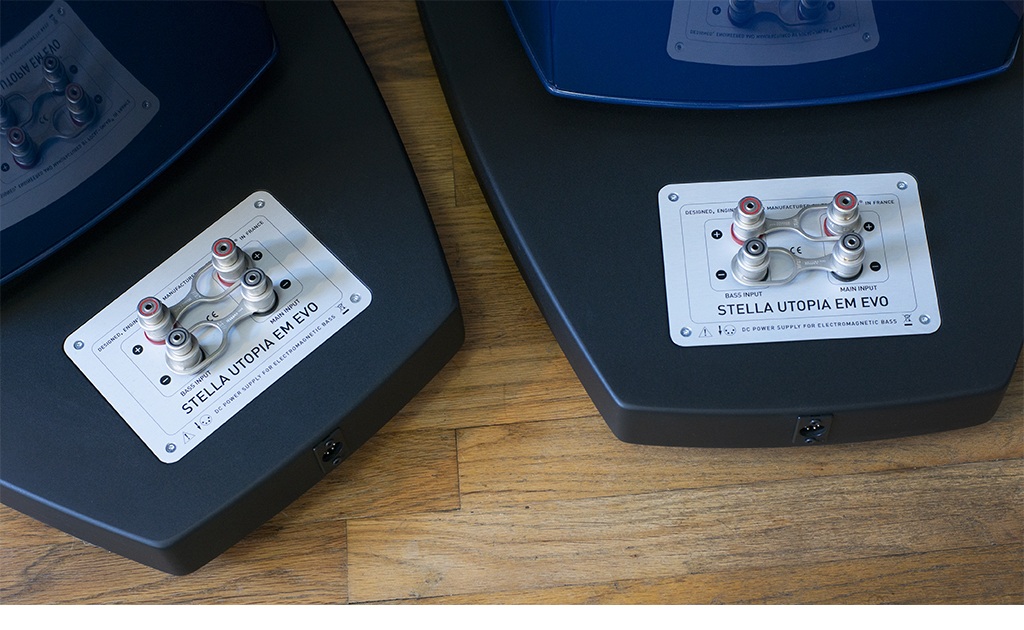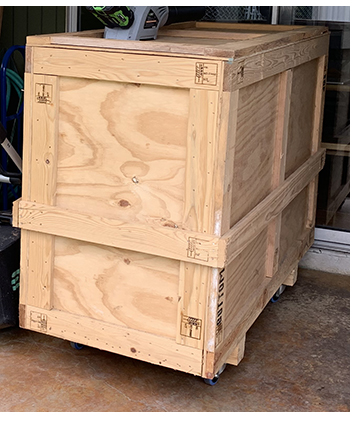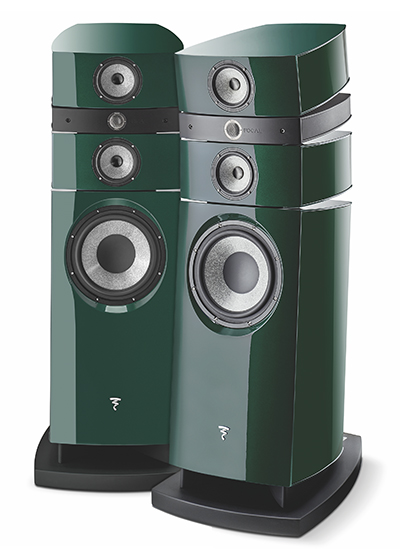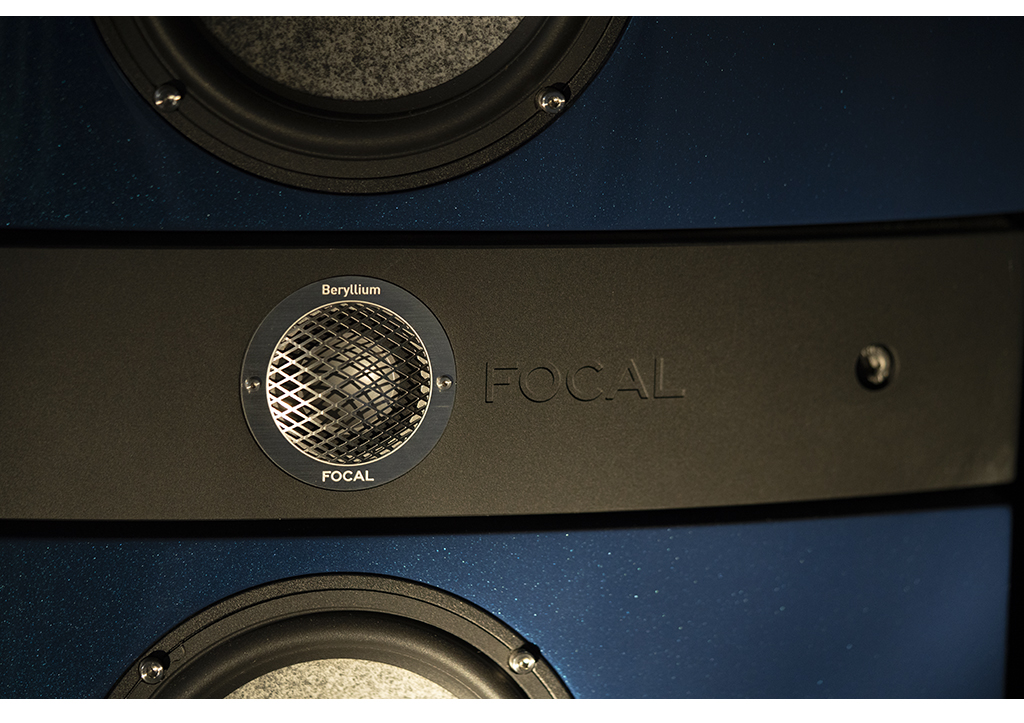The Focal Stella Utopia EM One Step From the Top is Still Grand
By Jeff Dorgay If you’ve experienced Focals’ Grande Utopia Ems in a large room, set up to perfection, it’s easy to see why many consider them one of the (if not the) world’s finest loudspeakers.
If you’ve experienced Focals’ Grande Utopia Ems in a large room, set up to perfection, it’s easy to see why many consider them one of the (if not the) world’s finest loudspeakers.
But like a hyper sports car, they need a lot of space to give their all. And if you’ve ever heard the Grande’s and not been wowed, they were either set up poorly or in too small of a room. Their well over $200k/pair price and size requirements limit them to a small audience.
The $100,000 less a pair of Stellas cost should be enough to buy a system to go with. Still not for the less than well funded, but the difference between a $500k or closer to $1M system is often a very different customer, with other requirements. As someone once told me, “the difference between me, and my friends with big, big money is the jet. I fly first class, they have their own plane. We stay in the same five-star hotels and golf at Pebble, but they have the plane. Me, I walk to work, but I get it.
So, if you’re on board, and shopping speakers in this price range, there are some exciting choices. Where 10 or 15 years ago, this would be the stratosphere, it is now first class. (at least in terms of price) I submit that those having a somewhat smaller listening environment can achieve nearly the same result with the Stellas. However, the Stellas still need a fair amount of room to sing. Much like the MartinLogan Neoliths, we reviewed a few years back and the Sonus faber Aida, these speakers all taxed the limits of my listening room, which is only 16 x 24 feet. To be fair to Focal, I would suggest that this is the smallest room to achieve greatness with these speakers.
Any less listening space and you would probably be better served with the next speaker down the range, the Maestro Utopia. When we had the Maestros here, they were much easier to optimize to our room, but the Maestro lacks the field coil woofer and the wide range of adjustments making fine-tuning them to the ultimate degree that the Stella possesses. Choices can be tough.
The Stella does share the same field coil technology as the Grande, though in this speaker, the woofer is a 13-inch unit, instead of the 16-inch one in the Grande. Either way, the Stella still goes down to 22 Hz, so there really is no need for a subwoofer. This is a true full range speaker. Long term TONE readers know we like the low frequencies, and whether listening to a full orchestra, or the heaviest beats, the Stellas can rattle your listening room.
You will need Jedi-like patience
First, make sure and have help unboxing your Stellas. They weigh just a bit over 600 pounds each in their sturdy crates, and 374 pounds each, unboxed. Removing them is very straightforward, and in this case, Focal is at the top of their class compared to a few other large speakers we’ve used. Once unboxed, they are temporarily mounted on wheels, so once your assistants have them on the listening floor, the rest of the process is a breeze. Usually, the long wall in our main listening room is the go-to position, but in this case, placing the Stellas on the short wall, with the tweeters about five feet out from the rear wall proves perfect. There are two sets of adjustments for the low frequencies – the first tips up the bass response at about 50 Hz, in increments from a flat position, and the second increases or decreases the output of the woofer. A single set of jumpers increases midrange level and there are two settings for the tweeters, also adjustable via beefy jumpers, with a chart on the back of the Stellas, accessed by clicking the rear panel behind the tweeter.
 This degree of adjustment will either make you super happy or drive you to insanity. We felt it makes a speaker this good, so much easier to implement, and also is part of what makes the Stellas unique in their own right. Focal claims 243 unique adjustments. I probably tried 30 before I got to a level of extreme happiness.
But don’t get too crazy with adjustments just yet. Here’s the only bit of bad news concerning these speakers – they take a long time to break in all the way. Some say it’s close to 1000 hours. They sound flat, forward, and constricted out of the crates, but don’t despair. They start to open up between 100 and 200 hours, really coming into their own at about 400, with marginal improvements in clarity and smoothness going forward. As I recall our reference Sopra no.3s took a few hundred hours to sound their best too. Some of this is the woofer surround, some the beryllium tweeter, and the rest the electronics in the woofer power supply and crossover.
This degree of adjustment will either make you super happy or drive you to insanity. We felt it makes a speaker this good, so much easier to implement, and also is part of what makes the Stellas unique in their own right. Focal claims 243 unique adjustments. I probably tried 30 before I got to a level of extreme happiness.
But don’t get too crazy with adjustments just yet. Here’s the only bit of bad news concerning these speakers – they take a long time to break in all the way. Some say it’s close to 1000 hours. They sound flat, forward, and constricted out of the crates, but don’t despair. They start to open up between 100 and 200 hours, really coming into their own at about 400, with marginal improvements in clarity and smoothness going forward. As I recall our reference Sopra no.3s took a few hundred hours to sound their best too. Some of this is the woofer surround, some the beryllium tweeter, and the rest the electronics in the woofer power supply and crossover.
Here’s another Stella tip to save you major disappointment. If you’ve never owned a Focal speaker, their factory in France takes great care to put a tightly adhering, clear plastic wrap on the speakers, so they survive the boat ride. However, in our case, the friendly folks at Focal wrapped over the midrange drivers, so there was almost no output. Everyone was sitting around after unpacking going “damn these speakers have no midrange to speak of,” but it was our fault for not double-checking. Remove the black grills and make sure the drivers are uncovered!! Plan on it taking about a months’ worth of solid listening until your Stellas sound as they should, don’t give up on them!
Incredibly easy to drive
Thanks to the field coil woofer and the rest of the tech inside the Stellas, they have a sensitivity rating of 94db. This sounds good on paper, but some efficient speakers have a lot of crossover network loss, and still need a massive amplifier to really make a lot of sound. Even the 4 watt per channel Whammerdyne 2A3 delivered heavenly results with the Stellas, though that’s probably not quite enough juice in a large room.
Realistically, 30 watts per channel will get the job done, and the emphasis should be on quality here. Working with the Pass XA30.8 (30wpc), our Nagra 300B (25wpc), the VAC Sigma 170i(80wpc) and the new Conrad-Johnson ART 27 (36wpc) all were brilliant choices. For those having more power on tap, you will get even more dynamic swing. Cycling through the Pass XA200.8s, a pair of Nagra Classic Monoblocks, the Audio Research 160Ms and the latest EVO400 monoblocks from PrimaLuna were like going from a 600cc motorcycle to a 1000cc bike, and thanks to the incredibly high resolution that the Stellas offer, each of the dozen amplifiers we auditioned the Stellas with offered a completely different listening experience. So there is plenty of fine-tuning to be done there as well.
But the key to Stella’s superiority is break in and setup. Once you have a rough set performed, plan on spending the better part of a day really fine-tuning your Stellas for best results. As I’ve said many times before, it’s like correctly optimizing VTA on a premium phono cartridge. When you get it just right, these big speakers disappear into your listening space like a pair of LS3/5as – it’s an experience to behold. If they sound harsh or bright, your work is not complete. Pay particularly close attention to the rake angle of these, once you’ve optimized position for the best balance of bass extension and lack of mid-bass bloat. Then make small (I mean tiny) changes on the rake angle to get the tweeter position just right. Consider those controls on the back as your last resort. I didn’t need them in my main listening room, but they were a major blessing in my 14 x 18-foot living room.
As your Stellas break-in, you’ll be starting to really get a feel for what they can do. Great as the Sopras are, in comparison, they lack the degree of resolution and clarity that the Stellas offer. Going back and forth between the Stellas, Sopra 3s, and Kanta 3s, the lineage is clear – you would never mistake the other two speakers for anything but Focal, but the sheer ability to move air and swing is what makes the Stellas worth their considerably higher price tag. You just don’t get this in a 20-50k speaker. Think those audiophile clichés of “lifting the veil,” “cleaning the window,” that kind of thing.
If you like the sheer speed of electrostatic speakers, Focal’s beryllium tweeter will not disappoint you. These speakers paint a big canvas, and while I always joke that you need big speakers to make big sound, you just don’t get this level of reach out and touch it with a pair of mini-monitors. Listening to Alan Taylor’s version of “The Tennessee Waltz,” and the banter of the musicians in the studio is scarily lifelike, reproducing every bit of nuance, that you’d expect from a minimalist singer/songwriter with an acoustic guitar in a small room. It doesn’t feel like an excellent recreation, it feels like you’re sitting on a stool in the studio, immersed in the performance. When using the big Pass monoblocks, AC/DCs “For Those About to Rock” can be played loud enough without distortion, compression, breakup, or collapse in the soundstage to approach the sheer sonic velocity of a live performance. This is where the 94db/1-watt sensitivity really comes in handy.
Small, single driver, high sensitivity speakers are entertaining, but they don’t play big music in a big way. And this is really the value proposition of the Stellas – they can render everything from the most intimate vocal performance to arena rock. All the while keeping it in perfect scale and perspective. Few speakers can do this, yet the Stellas do it without effort.
 An incredible destination, indeed
An incredible destination, indeed
We could go on and on about all the tech that goes into the Stellas, but you can read about that here…
Focal goes into great depth about their current beryllium tweeter, the latest driver suspension, the EM woofer and their new power flower midrange drivers. The triumph is that it all works well and works together perfectly.
Having visited the Focal factory, and watching the incredibly skilled people that work there build these speakers is a true experience. Everything in the Stellas is designed and built from the ground up. All the drivers, the crossover networks, and the cabinets. I’ve mentioned this in past Focal reviews, but what I found most impressive about the Focal factory is the way they integrate modern and legacy techniques in building their speakers. In one room, you observe someone in a cleanroom wearing a hazmat suit stamping tweeter domes, yet in another, someone is sanding a coat of the cabinet’s final finish manually, stopping to feel the corners with a bare hand. All of this takes time, patience, and skill. While some will obviously balk at the price of the Stellas, you could pay this kind of money for a timepiece. The Stellas (and the Grandes) are really bespoke loudspeakers, and to me, musical works of art. I can’t help but comparing the Stellas to a fine automobile again, because when you drive top range sports cars, Ferrari does it one way, Aston Martin another, and Porsche still another. All deliver frighteningly good performance, yet you will respond to one of the three more than another. Mega speakers are the same way.
Yet putting it all in perspective, and that’s kind of a wacky thing for speakers that cost a lot more than most cars, the Focal Stella EMs deliver amazing performance. Take your breath away performance.




